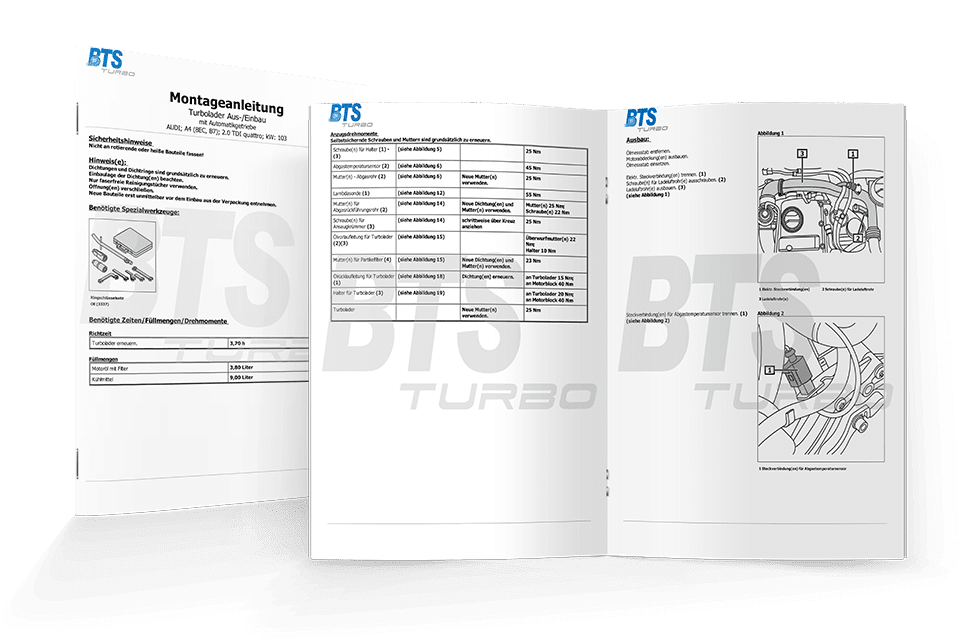Diagnosis tool
For turbocharger quick tests without OBD diagnostic tester
Learn about our diagnosis tool
Technical advisors
Free reference books with practice-oriented professional knowledge
Download our advisory books
Assembly instructions
For car, van and commercial vehicle turbochargers
Request assembly instructions
Make your job easier!
The BTS 2nd generation turbocharger diagnostic tool is the "must-have" for every workshop.
Download manual as PDF
- + High quality aluminum design
- + Digital dial gauge accurate to 1 mbar
- + For diesel and petrol engines
- + Also for vehicles without dipstick
- + Diagnosis during operation
- + For quick diagnostic tests without OBD device

Practical turbo knowledge from professionals for professionals
Download our practical and popular BTS technology guides free of charge, offering information about turbochargers, technology and valuable tips from the field.
Do you have questions that are not covered here? We will be happy to help you!
Assembly instructions
As part of our Europe-wide service, we provide our partners with exclusive removal and installation instructions for car, van and commercial vehicle turbochargers. The manuals include technical repair instructions in words and pictures with installation drawings, torque specifications, working values and information about special tools.
All information comes directly from the automotive manufacturers and is always available in the latest version in our database. This ensures that your workshop can remove and install turbochargers professionally and efficiently in accordance with the manufacturers' specifications. This makes your workshop even more efficient, reduces costs and puts you in a position to carry out even difficult repairs.
You will find the correct installation instructions for your model directly on the article in the store - simply search for the corresponding turbocharger using the parts finder!
All information comes directly from the automotive manufacturers and is always available in the latest version in our database. This ensures that your workshop can remove and install turbochargers professionally and efficiently in accordance with the manufacturers' specifications. This makes your workshop even more efficient, reduces costs and puts you in a position to carry out even difficult repairs.
You will find the correct installation instructions for your model directly on the article in the store - simply search for the corresponding turbocharger using the parts finder!




 German
German
 English
English